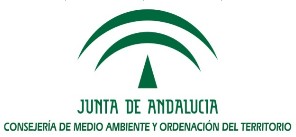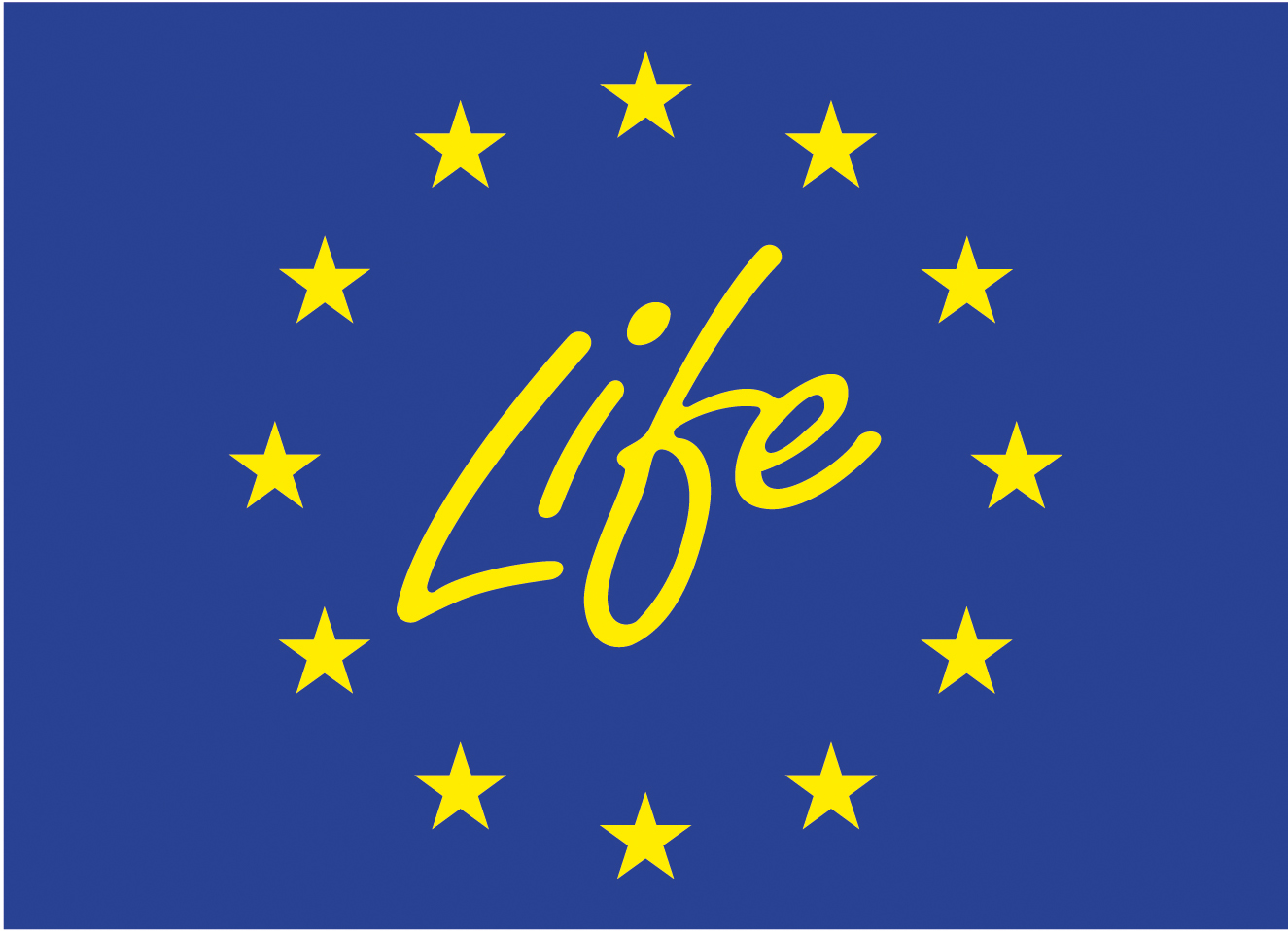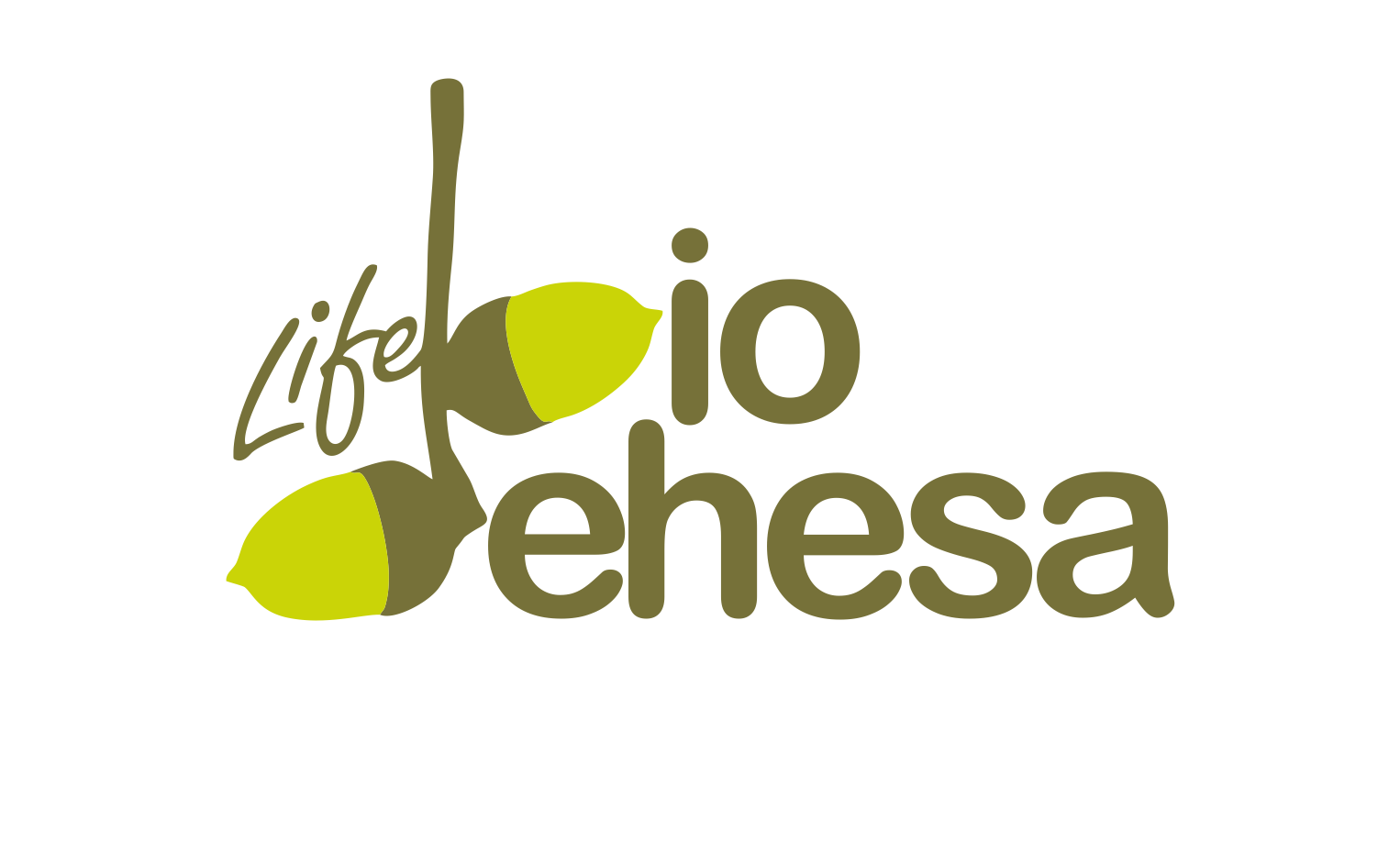SUMMARY (English version)
PROJECT PRECEDENTS
The Life bioDehesa project was developed with the main objective of promoting the integral and sustainable management of dehesas and improve the state of their biodiversity, while accompanying and providing support to the development of Law 7 of 14 July 2010 for the Dehesa. This main objective was achieved through the dissemination of demonstrations addressing the main challenges to the conservation of dehesas. The specific objectives (initially 5) set for the project were the following:
Strengthen the responsiveness of Andalusian dehesas against deterioration, aging and vulnerability to climate change.
Show that it is possible to have an integrated management of dehesas that respects habitat conservation and promotes biodiversity.
Transfer the best available knowledge and recent technical innovations to the entire dehesa territory.
Support an institution-building process that will promote integral management of the dehesas.
Contribute to training human capital for the integral management of the dehesas.
Disseminate and promote the importance and uniqueness of the dehesas.
To the achievement of the project’s objectives, we must add that many of its results have contributed to improving the future state of the dehesas, as Life bioDehesa has led to the creation of a new scenario for dehesas which will help maintain the major objectives set by the project in the long term, all thanks to the support that the Life project lent to the development of the Law for the Dehesa.
NETWORK OF DEMONSTRATION DEHESAS
The scope of activity of the project has been a Network of Demonstrative Dehesas (RDD in Spanish) formed by 42 estates, 35 private and 7 public, distributed in the entire area of Andalusian dehesas. These estates have been a test field where we have thought and considered the challenges and opportunities of the dehesas, we have studied and analyzed these and we have carried out a set of demonstrative conservation actuations that have served as a reference space for collective learning. The Network has enabled us to grow as a project, meet each other and make ourselves known. They have been in sum, the central core of Life bioDehesa and one of its main legacies to grant continuity of the goals set out in the project.

PREPARATORY ACTIONS
The compilation of previous experiences (A.1) was one of the actions that continued throughout the life of the project so they were kept constantly updated. This work, developed almost entirely by the UCO, gathers the most interesting information on certain areas or aspects especially relevant to the dehesa, collecting in summary reports the results of different lines of research, giving visibility and coherence to all the knowledge acquired.
The inventory of critical areas for the conservation of dehesas and their biodiversity (A.2) and that of areas occupied or potentially by threatened species (A.3) yielded different layers of very useful geographic information for the future management of dehesas, when this information will be added to the GIS of the Dehesa and the Environmental Information Network of Andalusia (REDIAM).
The creation of an Integral Management Plan model (A.4.1) was one of the most important actions of the project, since its result is directly linked to the final draft of the Integral Management Plans (hereinafter, PGI) for the dehesas of Andalusia. The testing of the model in the Demonstration Dehesas Network (RDD) and the continuous work of improvement by the Life project team generated very valuable and important contributions, thus supporting the PGI process in view of their final approval. Likewise, the creation of a PGI management computer application (A.4.2) will enable the completion of future plans and their processing by the competent Administration, facilitating and streamlining the work of both owners and managers of the dehesa as well as that of the Administration. This application was designed in open source format so it can evolve, and it was incorporated into the computer application systems of the Ministry of the Environment and Territorial Planning, in view of its future implementation.
The definition of indicators that will allow the evaluation and monitoring of biodiversity in the dehesa (A.5) was one of the actions addressed at the beginning of the project, since their development allowed obtaining a set of indicators to be used in the actions that followed. Four types of indicators were designed in total: site, biodiversity, sustainability and environmental; some of which were used in the measurement of environmental indicators (D.2).
The need to provide answers to dehesa owners and managers to fight the disease commonly known as seca [tn: dry] took up a substantial part of Life’s work. Three protocols were drafted for the detection, diagnosis and prevention in nurseries of the pathogens linked to the seca (actions A.6 and A.7). The first two are: “Protocol for the Diagnosis of Decay in Dehesa exploitation” and “Protocol of Phytophthora cinnamomi and Pythium spiculum isolation from root and soil samples”. The third document, “Forest reproduction material and holm oak and cork oak nursery plants in Andalusia”, also includes plant quality control, a specific chapter on the control of pathogens causing the seca in holm oak and cork oak nurseries. In connection to this document, the ” Protocol of (voluntary) joining to minimize the risk of producing Quercus species nursery plants with pathogens that produce root rot” was also drafted.
The selection of the group of farms making up the Demonstration Dehesas Network of Life bioDehesa (action A.8) represented a milestone in the development of the project, since it was the main axis of the project on which all the actions of the project pivoted, including conservation and dissemination. The final configuration of the Demonstration Dehesas Network consists of 42 farms, of which 35 private and 7 public, distributed throughout the Andalusian region.
Action A.9 Elaboration of Integral Management Plans in the Demonstration Dehesas Network took up great part of Life’s time and personnel resources in its first phase, since it included two subtasks of great importance on which other actions depended, like the formalization of agreements (A.10) and the development of conservation actions (actions C). Thus, the development of this action consisted in the first place, in the development of the Integral Management Plans in the RDD (the 42 PGI of the initial RDD), thus obtaining a double result, one result being the testing of the initial PGI model, developed as part of the project, and the other being the diagnosis and definition of conservation actions to be carried out in each of the farms. The second subtask included in this action was the drafting of the project for actual conservation actions, which defined the C actions with precision, as well as their subsequent bidding and adjudication of works. The double task of this action entailed an important investment of time and effort on the part of all the project teams which was much greater than originally planned. This generated delays, which together with the administrative delays involved in the bidding for the works for the execution of the conservation actions, gave rise to important delays in the beginning of the C actions of the project, postponing their commencement until the second quarter of 2016 (initially planned for the last quarter of 2013) and leading to an extension request for the project.
The formalization of collaboration agreements with demonstration dehesas (A.10) was another milestone of the project, since it made possible to provide the legal basis for the execution of conservation actions in private farms. These agreements reflected exhaustively the specific conservation actions of each of the collaborating farms, based on the details defined in the conservation actions project (action A.9). Consequently, the development of this action was complicated, to which we must add difficult administrative procedures, with organizational changes in the Ministry of the Environment and Territorial Planning itself and some of its heads. In the end, 35 collaboration agreements and their subsequent addendums were drawn up, under the new grant agreement signed after the approval of the extension of the project completion period.
The Diagnostic Service for the seca (A.11) was launched in the RDD in the first stage, through the implementation of the protocols developed within action A.6 (field protocol and laboratory protocol), as well as of the nursery protocol developed in A.7. In this first phase, the AGAPA Laboratories of Vegetal Production and Health analyzed 152 samples from 20 farms showing symptoms of decay and more than 25 nursery plant samples. Once this phase was concluded, work began on the Diagnostic Service for the “Seca“, included in the Andalusian Government Catalogue of actions for the “seca“. At the same time, the AGAPA laboratories team was working on the development of a new molecular pathogen detection technique, through training in this area and the development of a set of tests that will lead to the development of new detection protocols.
Conservation actions
The conservation actions carried out in the Demonstration Dehesas Network were one of the main axes of the project, since they made up the knowledge and demonstration transfer nexus for integral and sustainable management and biodiversity improvement. This work was carried out through the combination of the 8 action types provided in the Life bioDehesa approach, once the initial diagnosis was made in each of the collaborating farms.
Woodland renovation (C.1) was carried out by means of different techniques combined to increase the project’s ability to teach and demonstrate, in order to obtain a representation of possible actions to rely on in the face of regeneration failure, one of the dehesa’s main problems. Whenever possible, priority was given to the protection of natural regeneration, by installing individual protectors and carrying out clearings to select the best stalks. Where they did not exist, new individuals were planted, combining the sowing and planting with stalks of different size. Protecting these new individuals is a fundamental part of these actions. For this purpose, different forms of protection were used against herbivory, as well as various types of protectors, mesh shading and the adoption of straw mulch to retain moisture.
Woodland management (C.2) focused on the implementation of different pruning procedures and techniques, including training, maintenance and health. In general, all the prunings were light in nature, and in some cases growth prunings were combined with selective clearings.
Domestic and hunting livestock management actions (C.3) consisted in the realization of enclosures at water points to avoid shared use. In addition, domestic livestock only drinking troughs were installed. All of the above having the purpose of reducing the risk of sharing pathogens. Some portable cattle feeders were also installed, designed by one of the owners of the collaborating dehesas, which reduces the possibility of use by other animals. Moreover, temporary pasture lands were created with electric shepherds and livestock mesh fences.
The conservation, diversification and improvement of pastures (C.4) was based on managing grazing land together with fertilized land, or the combined managing of woodland or fertilized land and the sowing of grassland plants, for which a mixture of seeds was used from species adapted to the specific conditions of each farm.
The diversification of the arboreal and shrub vegetation of the dehesa (C.5) was another important set of actions. Riverbanks and watercourses were repopulated with the planting of black poplars, ash trees, willows, hackberry trees and oleanders. Furthermore, the arboreal vegetation was enriched with the planting of other species like gall oak, wild olive and carob. Patches of vegetation and hedges were created to promote shrub vegetation in the dehesa, fundamental as a refuge for microfauna and for protecting regeneration. A wide range of species was used for this purpose, including mastic, hawthorn, Iberian pear, kermes oak and juniper.
Soil conservation (C.6) was addressed by building gabions, breakwaters and dry-stone walls together with bush and tree revegetation. In other cases, strip clearings were carried out as demonstrative actions, leaving behind strips of scrub according to contour lines without touching them to break runoff continuity.
The actions related to plagues and diseases of the trees (C.7) focused primarily on the realization of preventive measures to control the root rot caused by Phytophthora cinnamomi, carried out by means of sanitary fords and limestone amendments, mainly in Huelva province, which has a higher incidence of this disease. Two types of nests were also installed, one standard and one more complex, which were named biodiversity boxes and designed for bat reproduction in addition to the nesting of insectivorous birds.
The diversification of habitats (C.8) constitutes the action with the most direct impact on biodiversity improvement in the dehesa. It includes conservation and various other actions: groups of ponds to promote biodiversity and amphibian habitats, installing and adapting watering holes with ramps to facilitate access to fauna, creating stands for apicultural or aromatic flora, protecting threatened flora by means of boundaries and conserving and rebuilding traditional stone walls. We should also note the installation of nesting structures for species of interest, such as the imperial eagle. To increase the rabbit population, constructions of tubes or pallets were made, along with enclosures and feeding and drinking troughs, and specimens were released.
MONITORING ACTIONS
One of the pillars that upholds a demonstrative project such as the Life bioDehesa project is its capacity to continue generating lessons learned with the passing of time. Throughout these years, we have started a follow-up program destined to evaluate the evolution of the actuations and their incidence in the conservation of the dehesas and their main components, either natural resources or livestock and other elements that financial benefit is obtained from. It is evident that the impact of much of these actuations will have an effect over time, which will be seen clearer in the long term. The evaluation and follow-up team of the project started this work defining a set of environmental indicators for evaluation of the state of the ecosystem of the dehesa and elaborated a mapping with the distribution and localization of the “ecologic places” of each estate, with the goal of optimizing selection of areas in which to obtain necessary data. Realization of the first sampling was before execution of the works in conservation actions, in order to know the starting point or base line of the different attributes evaluated. Given the marked seasonality of some indicators, the samples were collected in groups of field campaigns done during spring and autumn of 2014 and 2015 with the collaboration of consulting team technicians and the owners/managers of the estates of the dehesa network With the results obtained individual reports were done for each one of the estates that present in an integral way the initial state of the chosen indicators to evaluate the state of conservation of the eco-system.
Once the conservation actions were finished in the dehesa network, indicators were completed with attributes that determine impact on the state of conservation. In mid-2017, once the plants were established and the infrastructures were consolidated, a start of was done of data taking by means of field samples, satellite image analysis and interviews to the owners. Some of the actuations didn´t have the expected results, especially planting of new trees due to the effect of the adverse weather conditions of the summer of 2017: however, both this inconvenience with others derived from errors or design insufficiencies also form part of the lessons learned in this project. The general final panorama was at any rate, enriching: actuations undertaken in the network have contributed in diversifying pre-existing vegetation and fauna and correcting and improving the management of the agro-eco-system. And it has helped establish a set of procedures and tools destined to determine long time impact of some actuations, besides serving for better design of public backing measures specially oriented towards dehesas in the framework of the Regulation of FEADER Rural Development aid besides integrating as essential part of the Post-LIFE activity of the project.
TRAINING AND COUNSELING PLAN. TRANSFER OF KNOWLEDGE AND TRAINING OF HUMAN CAPITAL
The Program for Counseling and Training, started up by the IFAPA has been one of the great landmarks reached during the execution of the project and, with it, transfer of consolidated knowledge and recent technical innovations, along with spreading of lessons learned between the sector related to the dehesa. For this, in a first phase and through seven courses, technicians of the partner organizations of the project were trained. After, in a second stage, these technicians have been in charge of the consulting and training of the owners and managers of the dehesas. As support material for these training sessions, IFAPA edited ten didactic manuals in which the main aspects about management and handling of the dehesa were covered. During this period 29 day workshops and 29 training courses were done of which around 2.200 people in one way or another associated to the sector benefited from.
This training program was complemented and reinforced by guided visits to the dehesas of the network, designed to show the results and share lessons learned during execution of the conservation actuations done in the estates that shape it. These visits, initially oriented towards dehesa sector, were expanded to incorporate staff of the Administration belonging to the areas of environment, agriculture and livestock raising. In total 97 field visits were done, both to private estates as well as public ones. Thus over 1.000 people have been able to know in situ the conservation actions carried out and how the management of these estates is done and, above all, an opportunity has been had to share a day in which to speak, debate and think together about the dehesa, its challenges and its importance in conservation of biodiversity.
ACTIONS TO RAISE AWARENESS AND DISSEMINATE RESULTS
The communication and dissemination actions that were implemented had three main aspects closely related to each other: 1/ training and knowledge transfer, 2/ disseminating the project and its results and 3/ raising awareness of the values of the dehesa.
The training and knowledge transfer aspect was coordinated by the partner IFAPA and developed through 4 main areas: trainers training (E.2), technical assistance in the dehesas (E.2), developing teaching materials (E.3) visits within the Demonstration Dehesas Network (E.4).
The project and its results were disseminated under the guidelines defined in the Communication Plan (E.1.1) adapted to the project’s development needs. The following were implemented: press releases, publicity on the project’s website (E.8) and the social network accounts of the Ministry of the Environment and Territorial Planning, quarterly publication and dissemination of Life bioDehesa’s e-newsletter (E.7), RDD information panels and identification signs (E.12) and various information materials (E.3), including the itinerant exhibition. Moreover, Life bioDehesa staff participated in numerous events such as national and international technical days, seminars, conferences, etc. (E.10), thus increasing the project’s dissemination capacity. culminating with the project’s final Seminar (E.11), which enjoyed great success of participation.
The dehesa was promoted across the board in all of the project’s actions, however, three actions above all were more directly connected, such as the development of a didactic unit and informational videos (E.3); the consumer information campaign on dehesa products (E.6) and the implementation of participatory workshops (E.1.2).
The project was monitored through three different perspectives: D1/ socioeconomic monitoring; D2/ environmental evaluation, starting with the measurement of indicators on the field characterizing the vegetation structure associated with the dehesa in each of the RDD farms; D3/ environmental valuation of dehesa externalities with two different methodologies, one based on farm-scale Agroforestry Accounts (RECAMAN methodology) and the other according to the Ecosystem Millennium Assessment (EMA), by way of evaluating the services of the dehesa not linked to the chrematistic value. The results of action D3 allowed us to obtain an assessment of the dehesa ecosystem not directly linked to the value of its uses, thus allowing an approach to the valuation of the externalities of the dehesa.
The project was managed by the AMAYA coordination team under the direction of the Ministry of the Environment and Territorial Planning. This team works hand in hand with all the project teams (evaluation, monitoring and advisory), as well as with the other workers assigned to the project belonging to each of the organizations. The Monitoring Commission participated in the project as an internal body, with 13 meetings held since its inception.
BACKING OF THE LAW OF THE DEHESA
We have participated by contributing content in the elaboration of the Director Plan of the Dehesas of Andalusia, passed by decree on the 24th of October of 2017, and our experience has been transformed into orientations, directions and actuations that have become part of the catalogue of actuations proposed by this Plan for the next twenty years.
With the co-participation of all the members, we have developed an Integral Management Plan and it has been tested and applied to each of the demonstrative dehesas. This planning document will contribute that the estates be managed in a global and integral way, respecting their multi-functionality and promoting sustainability of their productive and ecological functions, seeking that financial benefit is not only compatible but also contribute in conservation of natural resources and promote the simplification and agility in administrative paperwork. Related to this, a computer application has been designed for future filling out and processing these Integral Management Plans, and work has been done to create a Geographic Information System for the Dehesa, as well as close coordination with the creation of the Andalusian Dehesa Census.
From Life bioDehesa we have backed and contributed to the contents of the Actuation Catalogue against the “Seca” of the Regional Government of Andalusia, passed by the Government in April of 2018, and, especially, the startup of the Diagnosis Service of the “Seca” and at the same time have developed protocols for detection of the causes and diagnosis of the incidence of radical rot. This service will be one of the pillars of future services for counseling dehesas, with the aim of providing firsthand knowledge to the owners of the dehesas that have plant health problems.
Also our experience has been used to advantage in the design of the aid to the dehesas of the Rural Development Program of Andalusia, specifically measures such as backing and renovation of agro-forestry systems, help in improvement of pasture in the estate and help in improvement of the trees. Without forgetting the support we have been giving so the dehesa be more and better known outside its distribution area. In this sense, we have had the great opportunity to work with technicians of the Commission and offer our demonstration dehesas as a meeting point for European authorities, national and regional authorities can converse about dehesas for dehesas. And we can state we have lived through a period of change in this sense, which has been described in the modification of the community concept of permanent pasture lands and agro-forestry systems.








